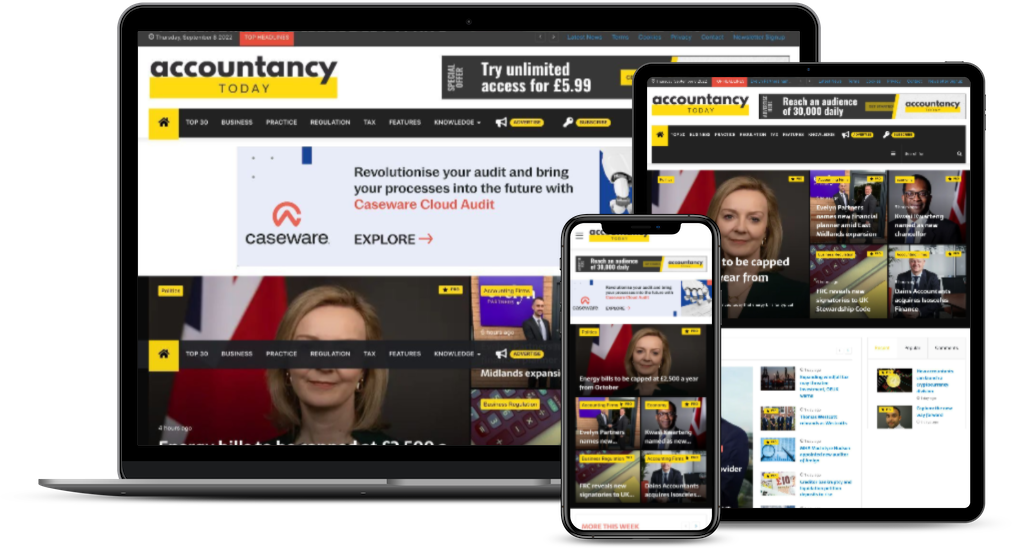
As the recent problems surrounding the Covid-19 pandemic have demonstrated, it is simply not possible to allow for all eventualities in a business. Sometimes things happen that are beyond any reasonable expectations. What we can do is our best to allow for change and create a buffer against the unexpected. Here, Nishi Patel, managing director of Northants Accounting and N-Accounting, highlights how proper cash flow planning and preparing for the unexpected can give businesses the best chance of riding out potential storms.
Think ahead when it comes to loans
Your business might currently be doing well financially but to make sure it keeps on the right track it is important to do financial projections. Projections help you estimate where your business will be standing financially in a year’s time, five years’ time and so on. Having a financial estimate helps business owners decide what their next investment should be for business growth and enables them to plan business activities accordingly. If the estimate looks bad, businesses can start working to avoid a slump or be better prepared for it by acquiring a loan in time.
Understand how much you need to borrow
If you are growing a sustainable business, you may reach a stage where you need a cash injection to take your plans on further. If you borrow too little you may not reach your potential but if you take on too much debt and you hit a problem you may struggle to make repayments. You need to have a detailed growth plan and be realistic about the size of your opportunity based on a thorough knowledge of your sales prospects. You should understand the overall cost of your borrowing, including fees and exit penalties and the security you can provide for a loan.
Avoid knee jerk reactions
A desperate situation is unlikely to be resolved by guesswork or an ill-considered response. Take the time to critically think through the situation, then make your plans based on the facts and the most likely scenarios. Explore your options fully and make sure you understand what they are. Where you don’t fully understand or feel like you cannot make the decision, turn to professionals and trusted advisors for input.
Make considered cutbacks
In challenging economic times, review your business thoroughly – if there are elements that are not working well, cut them out. Try to reduce regular costs where you can. You would be surprised how much businesses spend on luxuries and operating costs sometimes.
Can you save money on premises? Can you be released early from your lease? If not, how well do you get along with your landlord? Landlords may be open to rent reductions for a short period or even to a free period. Even if you cannot find a cost reduction on the premises it may still be cheaper to temporarily work from home and reduce how much you will be spending on heating and lighting etc.
Visualise a recovery and the demands on your business
The first thing to do when you hit a problem is put the situation into perspective so you can assess the demands on your business and visualise a recovery. A good place to start is with your workflow and sales pipe because the instant concern when there is an upset to your regular business is ‘where is the money going to come from?’
As far as your business cashflow goes what you can expect to invoice and what you could convert to a sale are often the key to finding an ongoing strategy. Use your CRM and accounts software to get a complete picture of what is going to be happening in the next few weeks.
Begin by looking at what is invoiced and what definitely will invoice in the short term. This will define your immediate cashflow and, combined with what you have in reserve, it will give you a safe financial operating period. This is a clearly defined period in which to resolve your crisis. It will also give you certainty and something positive to work with.
You should next move onto your sales pipe and forecast how much you can safely trust to come in as new business in the near future. It is important to be realistic in a crisis so discard everything from your forecast that you are not at least 90% – preferably 100% – certain will come in. This produces a firm value that you can use to accurately define how long you can safely stay operational in the very worst scenario. Usually, if you have a viable business already, this is longer than you think even if you need to tighten your belt a little.
Create cashflow calculations and logic to deal with your anxiety
Knowing the money you have going in and out of your business and when big bill are dues can help you plan for the short, medium and long term and help you make informed decisions in times of crisis, such as furloughing staff or putting a freeze on a recruitment.
There are web-based cashflow planning solutions available which integrate with accounting software to produce visual cashflow forecasts. They can run various scenarios to enable businesses to see potential financial impacts before they make decisions, such as taking on a new member of staff or launching a new product.









